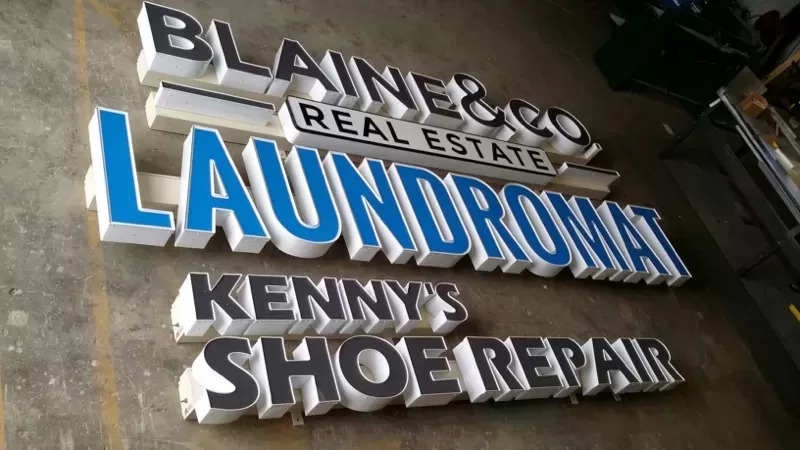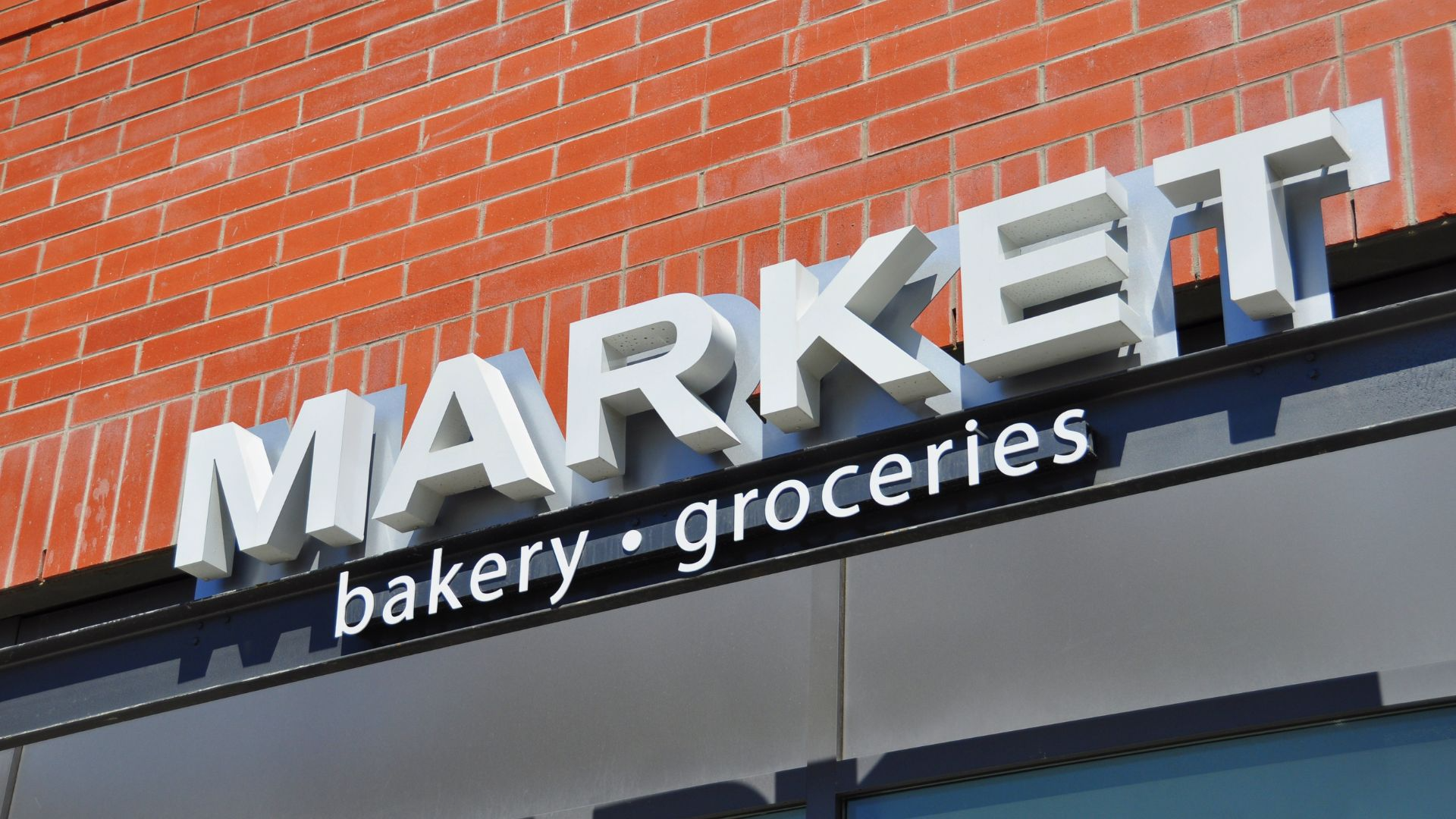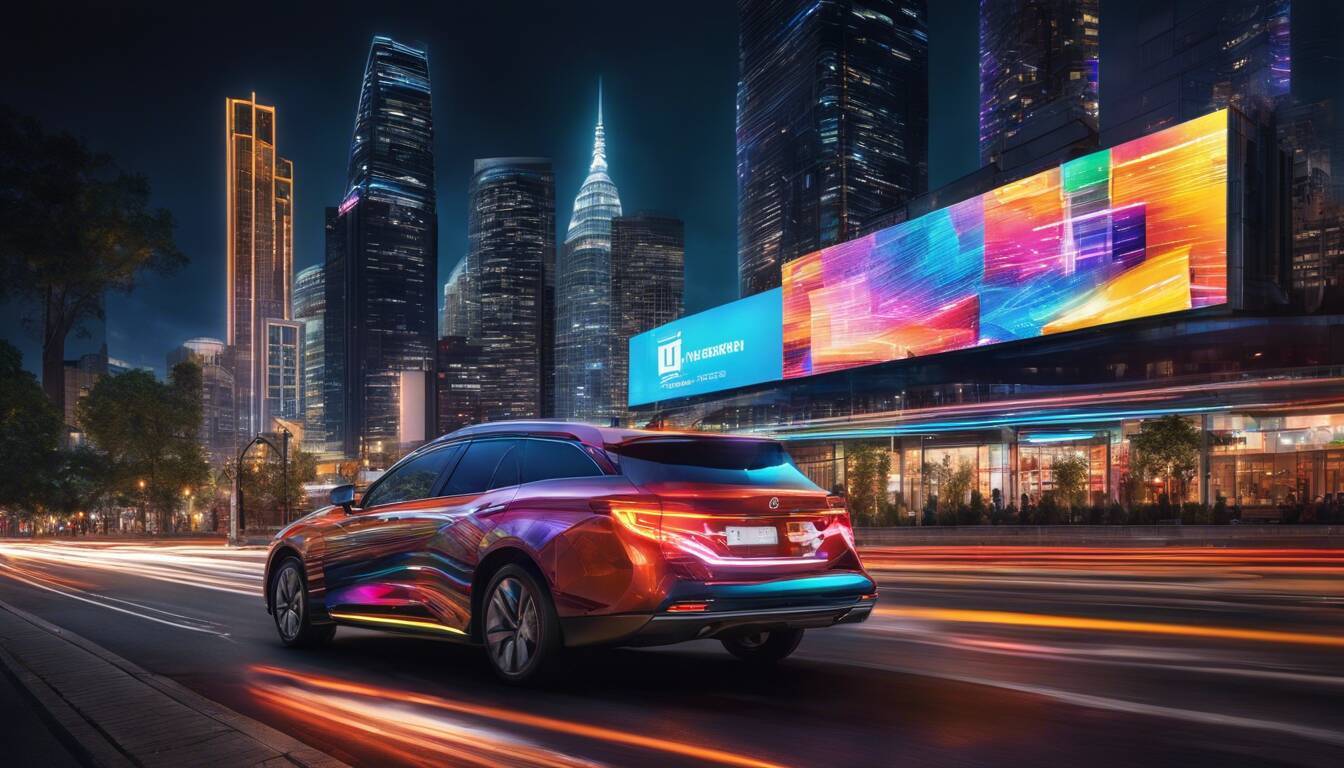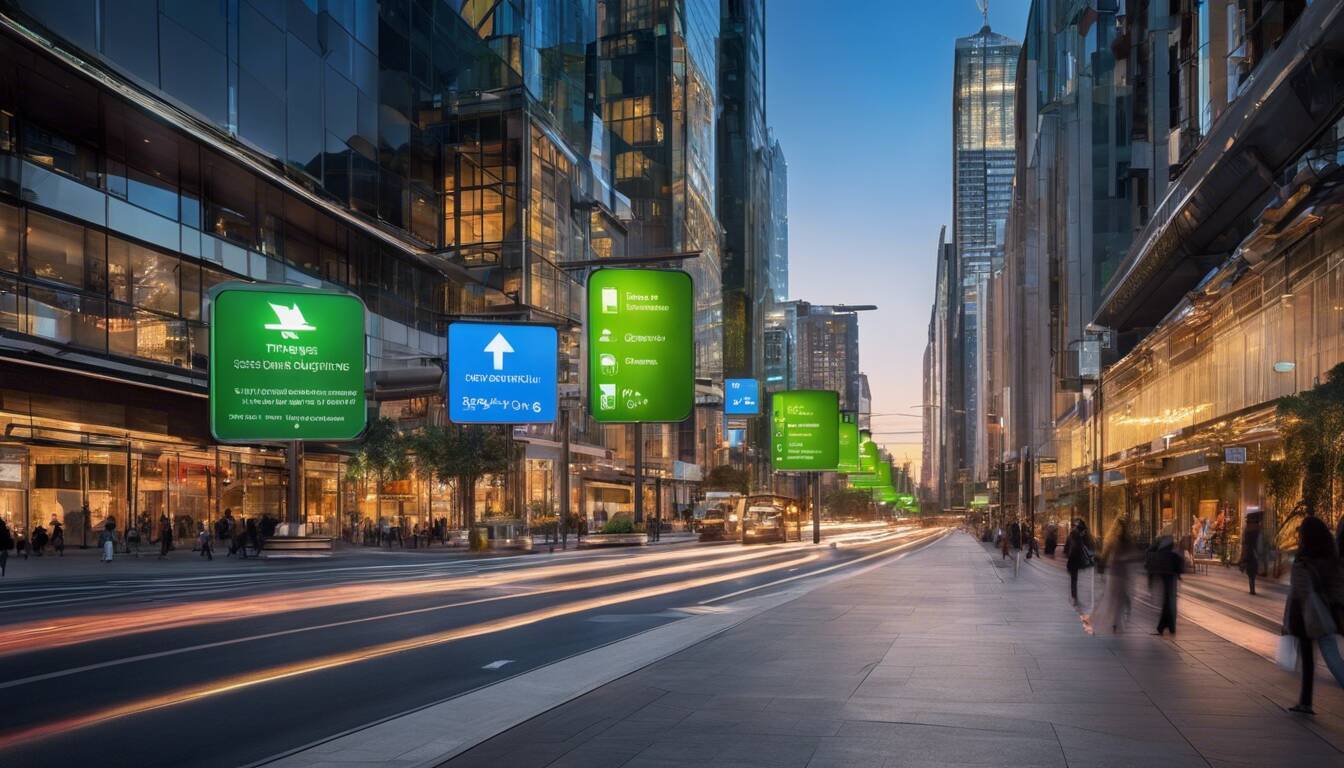Seasonal Signage Ideas to Attract Fall Shoppers in 2025
Did you know that 70% of customers are influenced by creative seasonal displays? As we move into fall 2025, fall signage ideas are more than decorative, they’re your ticket to capturing attention, sparking purchases, and connecting with your community. This guide explores proven ways to make your storefront irresistible, boost sales, and give your brand sizzling autumn charm.
Startling Fall Shopping Trends: Why Your Fall Signage Ideas Matter More Than Ever
-
A surprising 70% of customers report being influenced by creative seasonal displays, making fall sign strategies a retail priority.
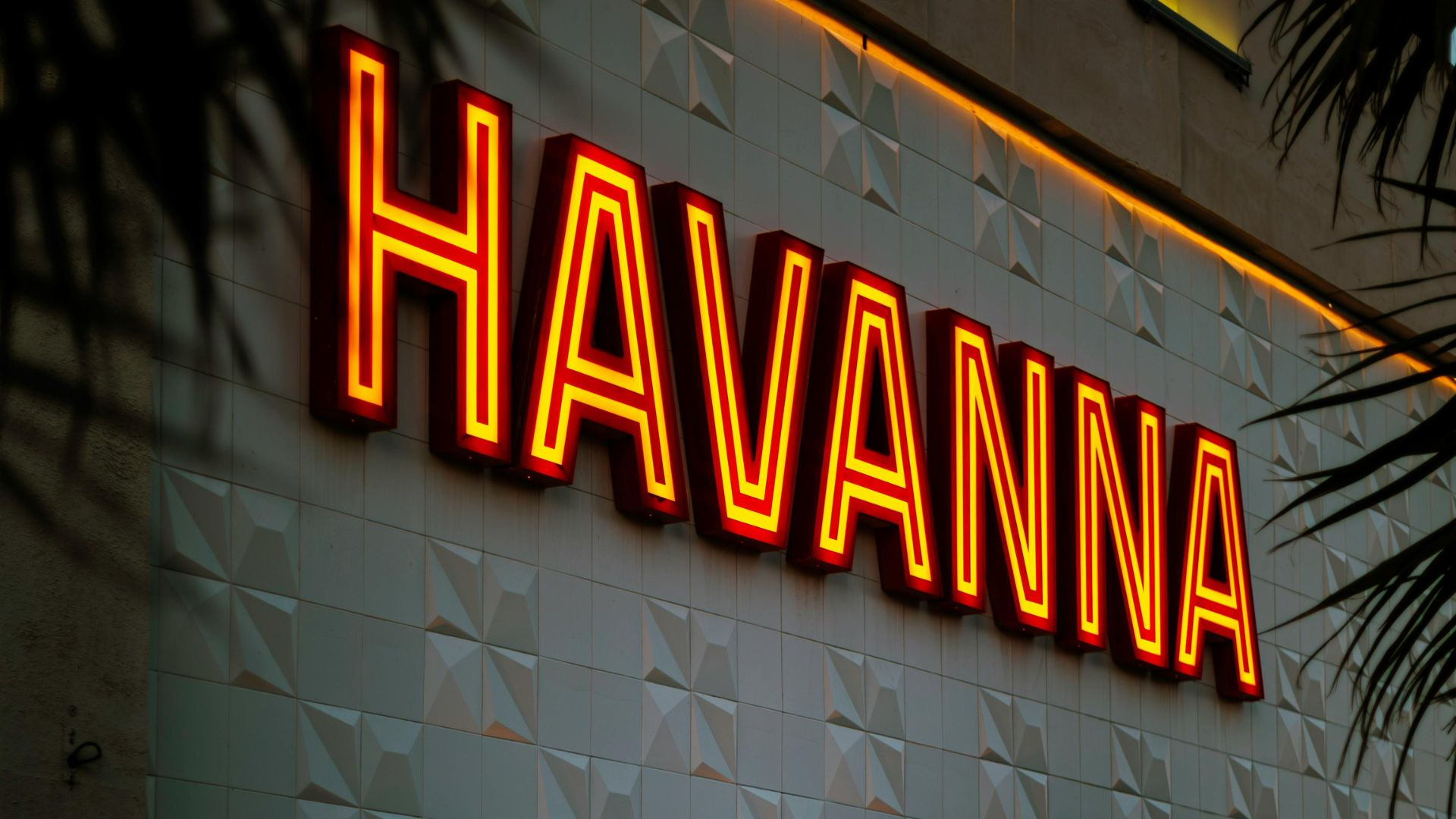
In the world of fall signage ideas, retail trends are evolving fast. With more shoppers seeking memorable experiences over mere transactions, your fall signs do much more than announce special deals; they create an instant emotional connection. Whether you manage a boutique, a local café, or a bustling brick-and-mortar store, investing in creative fall signs has become a must. Fall signs now set the stage for customer engagement, encourage spontaneous purchases, and offer that coveted shareworthy moment, think Instagrammable displays or cozy, personalized messages. By tapping into new autumn design trends, like tactile materials and bold, custom graphics, you’re not just following the crowd. You’re standing out and driving meaningful traffic right through your door.
What You'll Learn in This Guide on Fall Signage Ideas
-
Discover 23 actionable fall signage ideas, including rustic barnwood planks, oversized window graphics, and customizable options for your business.
-
Get expert tips on visual merchandising and key design elements for high-impact autumn signs.
-
Learn how to leverage personalized advertising with your fall sign designs.
-
Explore best practices to create inviting storefronts that attract fall shoppers and keep them coming back.
Why Effective Fall Signage Ideas Boost Sales and Customer Engagement
"The right fall sign doesn’t just announce a sale, it creates a sensory experience and draws shoppers inside." , Visual Merchandising Specialist
-
The role of seasonal fall signs in attracting attention
-
Connecting with customers through personalized advertising
-
Recent trends in fall signage design
Effective fall signage ideas can transform a regular shopping experience into an autumn adventure. Research shows that well-executed fall signs not only increase foot traffic but drive up average ticket size, especially when paired with personalized touches. Creative signage featuring fall decor, think vibrant leaves, pumpkins, and tailored fall greetings, brings warmth and authenticity. This prompts customers to linger and explore, leading to more purchases and repeat visits.
As personalization in advertising grows, fall signage that highlights special offers, word art or even playful fall quotes resonates deeply with shoppers. Customers crave authenticity, unique barnwood planks, hand-painted boards, or illuminated neon fall signs all create memorable environments. By refreshing your fall sign displays with the latest trends, like QR codes or local harvest imagery, you establish a modern vibe that’s still rooted in seasonal coziness.
1. Rustic Barnwood Planks: Timeless Fall Sign Aesthetic
Why Barnwood Planks Work for Fall Signage Ideas
-
Authenticity in rustic fall signs
-
Best messages to display on barnwood planks
Nothing embodies the warmth of autumn quite like a fall sign made from barnwood planks. Authentic, tactile, and instantly welcoming, these signs are a timeless favorite for both vintage lovers and modern retailers. The textured wood, sometimes reclaimed from flea market finds, brings a sense of nostalgia and comfort. Adding fall-themed messages, like “Grateful Hearts Gather Here” or “Pumpkin Patch Welcome”, turns these barnwood planks into talking pieces and social media magnets.
For best results, use earthy paint colors and classic autumn word art. Hand lettering or professionally-printed large alphas both shine on barnwood. This approach is ideal for brands focused on farm-to-table, cozy fall décor, or any space aiming for heartfelt, homey vibes. Combined with rustic elements like dried leaves, plaid throws, or a vintage mug, barnwood fall signage ideas never go out of style.
2. Personalized Advertising with Customizable Fall Signs
Engaging Shoppers Through Personalized Fall Signage Ideas
-
Templates for including business names, fall greetings, and timely offers
-
Case example: A bakery’s door hanger fall sign converts foot traffic
Personalized advertising elevates your fall signs from generic to memorable. By adding your business name, a playful fall greeting, or a tailored incentive, you make each customer feel seen. Many etsy sellers now offer customizable fall sign templates that seamlessly blend your branding with trending autumn color palettes and seasonal messages. For example, a local bakery might use a custom door hanger announcing “Fresh Pumpkin Spice Cookies – Stop In!” The result: curious customers detour for a taste.
Customizable fall signage means you can adapt messages for sales, events, or even shout-out social handles. Don’t forget to use fonts and graphics that reflect your brand personality. Simple touches, like an illustrated pumpkin patch, warm gold accents, or your logo, enhance perceived value and foster a sense of community. In an era of digital overload, a physical sign with a personal touch is refreshing and unforgettable.
3. Door Hanger Fall Signs: Small But Impactful
Creative Door Hanger Ideas for Fall
-
Design inspiration for welcoming fall shoppers
-
Best materials and placement
Door hanger fall signs offer a clever, cost-effective way to greet every customer with instant autumn spirit. These compact yet powerful pieces of fall decor quickly catch the eye, especially on bustling sidewalks or intimate boutique entries. Choose materials like sturdy wood, weatherproof metals, or thick felt for durability through changing autumn weather.
Design-wise, the possibilities are endless! Consider fall quote word art or images of autumn leaves, pumpkins, and gourds. For maximum impact, hang your sign at eye level and pair it with a matching seasonal welcome mat. Door hanger fall signage ideas work great for bakeries, salons, or any small business eager to deliver a warm hello (and perhaps a gentle nudge to come inside for that great fall sale price).
4. Oversized Window Graphics: Making an Autumn Statement
-
Tips for maximizing your storefront’s eye-catching potential
Oversized window graphics transform your storefront into a vibrant autumn canvas. By covering large window panes with bold fall designs, think sprawling pumpkin patches, swirling autumn leaves, or elegant “Hello Fall!” greetings, you command the attention of everyone passing by. Not only do these graphics announce your seasonal focus, but they also offer the perfect backdrop for shopper photos, enhancing your organic word-of-mouth advertising.
When choosing graphics for your fall signs, opt for high-contrast and richly colored visuals to stand out rain or shine. Use window-safe adhesive or static-cling vinyl, and refresh layouts throughout the season to promote new deals or events. Pair your graphics with other fall signage ideas, like sidewalk chalkboards or hanging banners, for a truly immersive customer experience.
5. Chalkboard Messages: Flexible Fall Signage Ideas
-
Best fall quotes and daily updates for passersby
Chalkboard signage is a perennial favorite for fall signage ideas thanks to its blend of flexibility and charm. These fall signs let you rotate messages daily, announce a sale price, share a playful fall quote, or invite families to the weekend pumpkin patch event. Plus, hand-drawn chalk illustrations of autumn leaves, steaming mugs, or cute pumpkins bring your storefront to life.
To maximize your sidewalk impact, use vibrant fall colors like deep orange and gold against crisp black chalk. Rotate your messages often: try “Grateful Hearts Make the Best Customers” on Monday, and “Nothing Beats Autumn Cookies!” by Thursday. Add a QR code for instant digital engagement, such as sign-ups for your fall newsletter or loyalty rewards. A well-styled chalkboard doesn’t just communicate, it delights, and draws more people through your doors.
6. A-Frame Sidewalk Fall Signs to Catch Foot Traffic
-
Sample messages and fall graphics that attract attention
A-frame sidewalk signs are a classic solution to get your fall signage ideas directly in front of shoppers as they stroll. These portable displays are perfect for busy street corners, open-air markets, or outside cafés and boutiques. Design options abound, from painted pumpkins and autumn leaves, to irresistible phrases like “Warm Up With Our Spiced Cider!” or “Fall Decor Sale, Today Only.”
Choosing sturdy, weather-resistant materials ensures your sign looks crisp all season long. Don’t forget to use legible fonts and bold, contrasting fall color palettes for maximum stand-out. Many businesses update their A, frame fall signs each week, mixing in curbside deals with fun fall themes. It’s a quick, affordable way to boost foot traffic and announce your participation in the great fall shopping season.
7. Themed Neon Fall Signs for Vibrant Night Visibility
-
How illuminated fall signage ideas extend your retail reach
Don’t let your fall signage fade after sundown! Themed neon fall signs amplify your storefront’s visibility long into the evening, making your business a glowing beacon for late shoppers. Neon colors, inspired by autumn’s oranges, golds, or even warm greens, draw eyes and create a festive vibe that’s hard to resist.
Position illuminated neon signs in windows or above your entrance to announce late hours, fall sales, or even a signature product. Consider phrases like “Pumpkin Lattes All Night!” or simple word art spelling out “Harvest.” Pair your neon with supporting graphics or rustic wooden frames to marry modern flair with traditional fall decor. The result? Enticing ambiance that boosts impulse stops and evening sales.
8. Seasonal Banner and Flag Designs
-
Color palettes and graphics for effective outdoor fall signs
Nothing captures the joy of fall quite like fluttering banners and flags decked out with autumn motifs. Hang bold, weatherproof banners above your entrance or along fences, using classic fall shades, burnt orange, deep reds, golds, and images of leaves, gourds, or vintage trucks hauling pumpkins. These fall signage ideas work especially well for stores with outdoor seating, garden centers, or farmers’ markets.
Don’t forget to add your business name, a call to action (like “Shop Our Harvest Sale!”), and maybe a playful word art quote. Use lightweight, fade-resistant materials to ensure your signs stay striking through shifting fall weather. Rotating banner messages weekly is a powerful tactic for keeping regulars engaged and attracting new visitors.
9–23. Innovative and Trending Fall Signage Ideas
-
Layered leaf garland signs
-
Three-dimensional pumpkin displays
-
Interactive QR code fall signage
-
Hand-painted calligraphy boards
-
Festive sales countdown boards
-
Fall sign with local harvest produce images
-
Vintage-inspired marquee fall signs
-
Moss or faux foliage-framed signs
-
Directional ‘Pick Your Pumpkin’ arrows
-
Scarecrow standee signage
-
Book stack display with fall messages
-
Window clings featuring fall themed items
-
Pop-up selfie sign photo spots
-
Warm welcome mats with fall greetings
-
Wreath-adorned chalkboard signs
Let’s get creative! Today’s shoppers crave unique, interactive, and trending fall signage ideas. Try layered leaf garland signs suspended above your entryway for a whimsical touch, real or faux, these leaves add instant warmth. Three-dimensional pumpkin displays, hand-painted calligraphy boards, or sales countdown chalkboards deliver info and autumn charm at a glance.
QR code signage leads savvy visitors to coupons or social media, while selfie photo spots, think pop-up signs with giant leaves or pumpkins, bring modern word-of-mouth to your fall campaign. Add standee scarecrows or book stacked signs for thematic consistency, or use window clings featuring apples, sunflowers, and more. These innovative fall signage ideas mix tradition with technology for 2025’s most successful shopping season.
Tables: Quick Reference to Fall Signage Ideas and Their Benefits
|
Sign Type |
Key Benefits |
Best Placement |
Target Audience |
|---|---|---|---|
|
Barnwood Plank Sign |
Authentic, rustic vibe; reusability |
Entry tables, checkout area |
Vintage lovers, family-focused shoppers |
|
Customizable Fall Signs |
Personalization, branding |
Storefront windows, doors |
Local shoppers, repeat customers |
|
Door Hanger Signs |
High visibility, welcoming |
Front doors, boutique entries |
Walk-ins, spontaneous shoppers |
|
Oversized Window Graphics |
Eye-catching, increases foot traffic |
Shop windows, malls |
Urban crowds, photo enthusiasts |
|
Chalkboard Messages |
Flexibility, share daily specials |
Sidewalks, café fronts |
Commuters, café goers |
|
A-Frame Signs |
Portable, updateable |
Sidewalks, event entrances |
Busy street shoppers |
|
Neon Fall Signs |
Night visibility, festive vibe |
Windows, above entrance |
Night shoppers, youth |
|
Banner/Flag Signs |
High movement, attracts from afar |
Outdoor spaces, above doors |
Families, event attendees |
|
Garland & 3D Displays |
Interactive, immersive |
Entrances, windows, Instagram spots |
Social media users, families |
Expert Quotes on Fall Signage Ideas for 2025
"This year’s most effective fall signage ideas revolve around authenticity, sensory engagement, and community relevance." , Retail Consultant, Amy Lane
People Also Ask: What are some cute fall quotes?
Incorporating Cute Fall Quotes in Your Fall Signs
-
Best quote examples for fall: "Hello Pumpkin!", "Autumn Leaves & Pumpkins Please", and more.
-
Creative ways to display cute quotes using barnwood planks and chalkboard fall signage ideas.
Incorporate playful fall quotes directly onto rustic barnwood signs or crisp sidewalk chalkboards for instant charm. Some favorites: “Hello Pumpkin!”, “Autumn Leaves & Pumpkins Please”, “Sweater Weather Is Better Together”. Display these in whimsical script, large alphas, or with hand-drawn fall decor, this approach works equally well on door hangers and A-frame signs. Word art adds personality and makes your fall signage ideas memorable for every visitor.
People Also Ask: What are some fall themed items?
Popular Fall Themed Items to Integrate with Your Fall Signage Ideas
-
Pumpkins, leaves, gourds, and rustic decor as effective visual themes for fall signs.
The classic imagery of autumn leaves, pumpkins, bright gourds, and rustic wooden accents is always in season for fall signs. Use faux or real mini pumpkins to accent chalkboards, or incorporate leaf garlands, felt acorns, and hay bales for added texture. These elements can be glued, tied, or simply arranged near your signs for visual depth and festive appeal. This not only highlights the fall season but encourages customers to snap and share, expanding your reach both on Main Street and social media.
People Also Ask: How to decorate for fall without being tacky?
Tasteful Tips for Stylish and Non-Tacky Fall Signage Ideas
-
Balance between color, simplicity, and sophistication in fall signs.
-
Use natural elements and minimalist typography to enhance appeal.
The secret to stylish, non-tacky fall signage ideas is restraint. Focus on a balanced color palette, muted oranges, deep reds, touches of sage green, paired with clean lines and spacious layouts. Avoid overloading with too many patterns or clashing graphics. Instead, combine natural elements (like wood grain, dried wheat, or simple foliage) with minimalist fonts or subtle word art. This creates an inviting, on-trend look that feels thoughtfully curated, never cluttered. Less can truly mean more when it comes to sophisticated fall signs!
People Also Ask: What is a fall greeting?
Welcoming Customers with the Right Fall Greeting on Your Fall Signs
-
Examples of warm, inviting fall greetings that boost seasonal sales.
A cheerful fall greeting goes a long way in making customers feel welcome and excited for the season’s offerings. Popular messages include “Welcome to Our Harvest Haven,” “Happy Fall Y’all!”, and “Cozy Up & Shop Local.” Integrate these greetings into your barnwood planks, banners, or even neon signs to instantly boost your storefront’s approachability and connect with shoppers as they search for autumn inspiration.
FAQs: Everything You Need to Know About Fall Signage Ideas
-
What materials last longest for outdoor fall signs?
Weather-resistant woods, treated metals, and high-quality vinyl ensure your outdoor fall signage stays vibrant through the fall season. Adding protective sealants extends life, especially for barnwood planks and hand-painted boards. -
How do I update my fall signage ideas every year?
Rotate core seasonal elements, such as new fall quotes, graphics, or sale prices, to keep displays fresh. Swap in trending fall signs styles, like digital QR codes or interactive chalkboards, for a modern touch. -
Can fall signs include digital elements?
Absolutely! Integrate scannable QR codes, LED ticker displays, or motion-activated lighting for a tech-savvy spin on classic fall signage ideas.
Key Takeaways: Maximizing Your Fall Signage Impact
-
Personalization, strategic placement, and thematic consistency are critical for fall signage success in 2025.
Ready to Transform Your Storefront?
-
Call Us Today, at 228-467-1718 to discuss your custom fall signage ideas for the 2025 season.
Transform your storefront this season with creative fall signage ideas and make your business the destination for fall shoppers in 2025!
